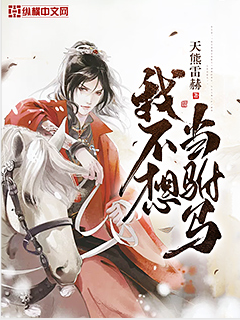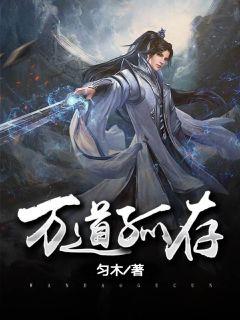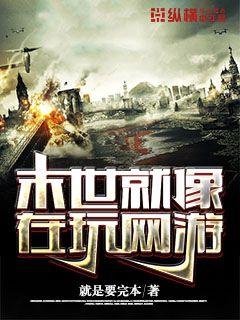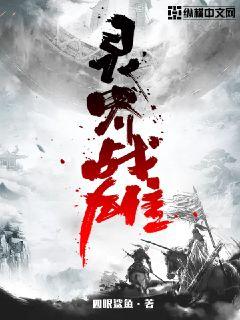中国对日本队比赛视频播放|nbajrs直播极速体育
- 来源:jrs直播网
- 2024-11-22 11:58:19

格利:一个冉冉升起的足球巨星
摘要:格利是一名年轻而有潜力的足球运动员,他的出色表现和坚定决心让他在足球界脱颖而出,成为备受瞩目的新星。本文将从他的个人背景、职业生涯、比赛表现和未来前景四个方面详细阐述格利的故事。
1、个人背景
格利出生于一个足球家庭,从小对足球有浓厚的兴趣。他的家庭对他的成长和职业生涯产生了重要影响。
在青少年时期,格利为自己的家乡球队效力,展现出了出色的天赋和技术,受到了俱乐部和国家队的青睐。
格利的成长经历和家庭背景为他未来的足球生涯奠定了坚实基础。
2、职业生涯
从加入职业俱乐部开始,格利展现出了对足球的热爱和不懈努力。他通过不断的训练和比赛,逐渐成长为球队的核心球员。
在职业生涯的初期,格利经历了许多挑战和困难,但他总是能够积极面对,并逐渐获得了主教练和球迷们的认可。
他在职业生涯中展现出了出色的技术和领导能力,成为球队中不可或缺的一环。
3、比赛表现
在比赛中,格利展现出了出色的个人能力,他能够在关键时刻挺身而出,为球队创造机会并取得进球。
他在比赛中展现出的稳定性和冷静头脑让他成为球队的关键先生,他的表现为球队赢得了许多关键比赛。
在国际比赛中,他代表国家队参加了重要的比赛,展现出了超越年龄的成熟表现,为国家队赢得了荣誉。
4、未来前景
格利的未来前景非常光明,他已经成长为一名备受瞩目的球星,并且备受各大俱乐部的关注。
他的个人能力和职业精神让人们对他的未来充满期待,他有望成为足球界的巨星,并为自己的国家赢得更多荣誉。
格利的未来将不仅仅局限于足球场上,他还有可能成为体育界的典范和领袖。
总结:
格利是一名充满潜力和天赋的足球新星,他的个人成长经历和职业生涯充满着魅力和动人故事。无论是在球场上还是球场外,他都展现出了非凡的魅力和影响力,成为人们关注和追随的对象。
Certainly! Here's the structured article on "Nain: From Lone Warrior to Team Leader":
**Abstract:**
Nain's journey from a solitary fighter to a cohesive team leader exemplifies a remarkable transformation. This article explores how he navigated challenges, built alliances, honed leadership skills, and ultimately transformed into a unifying force within his team. His evolution not only highlights personal growth but also underscores the importance of adaptability and collaboration in achieving collective goals.
---
1、Origins and Individuality
Nain’s early days were marked by solitary pursuits and individualistic approaches. His independent spirit and self-reliance shaped his initial strategies and decision-making processes.
As a lone warrior, Nain faced numerous challenges alone, relying on his instincts and skills honed through personal trials. His motivations were driven by personal goals and individual achievements, focusing solely on his own strengths and abilities.
Over time, Nain's experiences as a lone warrior fostered resilience and a deep understanding of his capabilities, laying a foundation for his future leadership endeavors.
2、Forging Alliances and Collaborative Efforts
The shift from independence to collaboration marked a pivotal turning point for Nain. Recognizing the limitations of individual efforts, he began to forge alliances and build collaborative relationships.
Nain actively sought out like-minded individuals and potential allies, recognizing the synergy and collective strength that collaboration could offer. Through shared goals and mutual respect, he cultivated partnerships that complemented his own skills.
This phase not only broadened Nain's perspective but also enhanced his ability to leverage diverse talents and perspectives within a unified framework.
3、Developing Leadership Skills
Transitioning into a team leader demanded a transformation in Nain’s approach and mindset. He focused on developing leadership skills such as communication, empathy, and strategic thinking.
Nain assumed responsibilities beyond personal achievements, guiding and motivating others towards common objectives. His leadership style evolved to empower team members, fostering a collaborative environment built on trust and shared vision.
Through mentorship and hands-on experience, Nain refined his leadership capabilities, ensuring alignment of individual aspirations with collective ambitions.
4、Becoming a Unifying Force
Nain's evolution culminated in becoming a unifying force within his team. His ability to inspire, resolve conflicts, and promote inclusivity solidified his role as a respected leader.
He encouraged innovation and creativity while maintaining cohesion, balancing individual autonomy with collective responsibility. Nain’s leadership exemplified adaptability and resilience in navigating challenges and achieving sustainable success.
Ultimately, Nain's journey from a lone warrior to a team leader underscores the transformative power of collaboration and leadership in achieving shared goals.
总结:
Nain’s journey from a solitary fighter to a cohesive team leader illustrates the profound impact of personal growth and collaboration in achieving collective success. His evolution highlights the importance of adaptability, resilience, and visionary leadership in navigating challenges and fostering a cohesive team environment. Through forging alliances, developing leadership skills, and becoming a unifying force, Nain exemplifies how individual strengths can be harnessed to achieve shared aspirations, creating a lasting impact on both personal and team dynamics.
This structured approach should provide a comprehensive exploration of Nain's transformation from a lone warrior to a team leader, encapsulating the essence of his journey and its broader implications.
文章摘要的内容
球员生死一瞬间,当呼吸停止,场上的抉择如同一幅跌宕起伏的画面,描绘了生命与决断的交汇。本文从多个角度探讨这一场景:首先,探索球员面对生死时的内心挣扎与宁静;其次,分析他们在极限压力下的决策过程;接着,讨论他们的身体反应和技术表现;最后,观察这些瞬间如何影响球员、团队以及观众。通过这些深入分析,展示出这些短暂瞬间背后的深刻内涵和情感冲击。
1、内心挣扎与宁静
球员在生死一瞬间,面对生命的脆弱和终结,内心往往经历着剧烈的挣扎。有些人选择面对死亡时显现出意外的宁静与冷静,如同面对赛场上的高压局面。这种内心状态如何影响他们的表现和决策?在这种心理对抗中,他们又如何找到力量和勇气?
另一方面,一些球员可能在这一刻感受到生命的脆弱,从而展现出意想不到的冷静。这种内心状态对他们的决策和表现有何影响?他们如何找到勇气和力量来应对这种极限情况?
在这种生死关头,内心挣扎和宁静之间的微妙平衡是如何影响球员的表现和选择的?这种心理状态如何在他们的决策过程中起作用?
2、极限压力下的决策过程
球员在面对生死一瞬间时,通常需要在极限压力下做出关键决策。这些决策可能涉及到如何处理局势、保护自己或队友,以及继续比赛还是中断比赛。他们是如何在这样的压力下做出决策的?
决策的过程中,他们可能会考虑到哪些因素?他们如何权衡风险和收益?这些决策又如何影响到他们及其团队的最终结果?
在这些瞬息万变的情况下,球员如何利用自己的技能和经验做出最佳决策?他们如何在压力下保持冷静和理智?
3、身体反应和技术表现
生死一瞬间,球员的身体反应和技术表现常常成为关键。他们的身体如何自动响应并做出反应?他们的技术训练如何在这个关键时刻发挥作用?
在这种高度紧张和危险的情况下,他们如何调节自己的身体状态以及控制自己的技术表现?这些技术和身体的反应如何影响到比赛的结果和他们自己的安全?
球员如何利用训练中习得的技能和技术来应对这种突发状况?他们如何在身体极限和技术水平之间找到平衡?
4、影响与反响
球员生死一瞬间的场上抉择,不仅仅影响到他们自己,还可能对整个团队和观众产生深远影响。这种瞬间如何影响到团队的精神状态和战术安排?
观众如何看待并反应这些生死瞬间的场上抉择?这种情绪和情感如何通过球员的表现传递给观众?
这些生死瞬间如何在后续比赛和训练中产生影响?球员如何从中吸取教训并加以应用?
总结:
球员生死一瞬间,当呼吸停止,场上的抉择不仅是一场技术与心理的较量,更是生命的深刻反思和决断。这些瞬间不仅考验着他们的技能和决策能力,也塑造了他们作为运动员和个体的形象。每一个生死瞬间的抉择,都如同一幅深刻的画面,永远铭刻在人们的记忆中。
这些经历让我们看到了运动的真正意义,以及在极限情况下人类的力量和脆弱。生死一瞬间,不仅是比赛的一部分,更是人生的一部分。
Certainly! Here's the structured article on "Optimizing Training Performance through Nutrition and Diet for Professional Athletes":
**Abstract:**
Professional athletes rely heavily on nutrition and diet to enhance their training performance. This article explores key factors that optimize their performance through dietary strategies. It examines the role of macronutrients, micronutrients, hydration, and timing of meals in maximizing athletic potential. By understanding and implementing these factors, athletes can achieve peak performance and maintain optimal health.
---
**1、Macronutrients:**
Macronutrients play a fundamental role in the diet of professional athletes, influencing energy levels, muscle recovery, and overall performance.
Athletes typically require a balanced intake of carbohydrates, proteins, and fats to meet their energy demands and support muscle repair.
Carbohydrates serve as a primary fuel source, especially during high-intensity activities, emphasizing the importance of adequate intake and timing to sustain performance.
1、Proteins:
Proteins are essential for muscle repair and growth, with athletes needing slightly higher amounts to recover effectively from training sessions.
Timing protein consumption around workouts is crucial for maximizing muscle synthesis and adaptation to exercise-induced stress.
A variety of protein sources, including lean meats, dairy, and plant-based options, offer athletes flexibility in meeting their nutritional needs.
2、Fats:
Healthy fats contribute to sustained energy levels and support overall health in athletes, emphasizing sources like nuts, seeds, and fatty fish.
A balanced intake of omega-3 and omega-6 fatty acids aids in reducing inflammation and optimizing recovery post-training.
Adjusting fat intake based on training intensity and individual metabolic needs helps athletes maintain optimal body composition and performance.
3、Carbohydrates:
Carbohydrates are critical for replenishing glycogen stores and providing quick energy during intense exercise sessions.
Choosing complex carbohydrates such as whole grains and vegetables ensures sustained energy release and supports prolonged athletic performance.
Strategic carb-loading before competitions or high-demand periods helps athletes maximize glycogen storage and enhance endurance.
---
**2、Micronutrients:**
Beyond macronutrients, micronutrients are essential for maintaining overall health, supporting immune function, and optimizing athletic performance.
Athletes require adequate intake of vitamins and minerals to support physiological processes, including bone health, oxygen transport, and muscle contraction.
Key micronutrients such as iron, calcium, vitamin D, and antioxidants play crucial roles in reducing the risk of injury and illness among athletes.
1、Iron and Calcium:
Iron is vital for oxygen transport and energy production, particularly significant for endurance athletes to prevent fatigue and optimize performance.
Calcium supports bone health and muscle function, essential for maintaining skeletal integrity and reducing the risk of stress fractures.
Ensuring sufficient intake of these minerals through diet and, if necessary, supplementation helps athletes meet their unique nutritional demands.
2、Vitamins and Antioxidants:
Vitamins such as vitamin D, C, and E contribute to immune function and recovery, aiding in the repair of muscle tissue and reducing oxidative stress.
Antioxidants from fruits, vegetables, and nuts help mitigate exercise-induced inflammation and support cellular repair processes post-exercise.
Strategies to incorporate a diverse range of micronutrient-rich foods into an athlete’s diet promote overall health and optimize training adaptations.
3、Hydration:
Hydration is critical for maintaining performance and preventing dehydration-related complications during training and competition.
Athletes should monitor fluid intake to replace losses through sweat, adjusting consumption based on environmental conditions and individual sweat rates.
Optimal hydration supports thermoregulation, nutrient transport, and cognitive function, enhancing overall athletic performance and recovery.
---
**3、Timing of Meals:**
The timing of meals and nutrient intake around training sessions is crucial for optimizing energy availability, promoting recovery, and supporting adaptation to exercise stress.
Strategic meal timing helps athletes maximize glycogen storage, enhance muscle protein synthesis, and minimize muscle breakdown.
Pre-exercise nutrition focuses on providing adequate carbohydrates for fuel and minimizing gastrointestinal distress during workouts.
1、Pre-Exercise Nutrition:
Consuming a balanced meal or snack containing carbohydrates and a moderate amount of protein 2-4 hours before exercise provides sustained energy and supports muscle function.
Hydration before exercise ensures adequate fluid balance and enhances thermoregulation during physical exertion, optimizing performance and reducing the risk of dehydration.
2、Post-Exercise Recovery:
Immediately following exercise, consuming a combination of carbohydrates and proteins within the first 30 minutes to 2 hours supports glycogen replenishment and muscle repair.
Timing protein intake post-exercise stimulates muscle protein synthesis, facilitating recovery and adaptation to training-induced stress.
Incorporating micronutrients and fluids into post-exercise meals aids in rehydration, replenishment of electrolytes, and overall recovery.
3、Nutrient Timing Strategies:
Strategically timing meals and snacks throughout the day maintains stable blood sugar levels and sustains energy for consistent training performance.
Adjusting nutrient intake based on training volume and intensity helps athletes meet their energy demands and achieve optimal nutrient timing for enhanced performance.
Individualized nutrition plans tailored to training schedules and performance goals optimize nutrient timing strategies, supporting long-term athletic success.
---
**4、Conclusion:**
Optimizing training performance through nutrition and diet involves a comprehensive approach focusing on macronutrients, micronutrients, hydration, and meal timing.
By understanding the role of each component and implementing evidence-based strategies, athletes can enhance performance, support recovery, and maintain overall health.
Continued research and personalized nutrition plans are essential to meet the unique needs of professional athletes and maximize their athletic potential.
Overall, integrating these key factors into a structured nutrition plan empowers athletes to achieve peak performance and excel in their respective sports.
### 文章摘要
本文深入探讨足球巨星交易市场中的转会风云、各俱乐部财力对比及未来发展趋势。从历史记录到当前情况,分析豪门球队如何通过重金引援实现竞争优势,并展望未来的趋势和可能的变化。
---
### 1、转会风云
足球转会市场每年都是球迷和媒体关注的焦点。从巴黎圣日耳曼的千万欧元转会到皇家马德里的引援战略,转会窗口期间的动态变化影响深远。
俱乐部如何利用这一机会增强阵容实力?转会政策如何影响联赛竞争格局?转会费用的上涨趋势对小型俱乐部有何影响?
球员价值评估和市场波动如何形成每年的高峰期和低谷期?转会市场的秩序和规则如何影响俱乐部的策略选择?
### 2、财力对比
富裕俱乐部与财力不足俱乐部之间的差距如何影响球员的市场价值和转会可能性?
转会费用的不断攀升是财力竞赛的结果,还是市场供需的反映?
财政公平法规(FFP)如何限制了某些俱乐部的行动能力?俱乐部如何通过商业收入增长来支持高昂的转会支出?
经济衰退或外部因素如何影响富豪俱乐部的投资?
### 3、未来预测
未来几年的足球转会市场将如何发展?技术和数据分析的进步如何改变俱乐部对球员的需求和选择?
转会市场是否会越来越集中于少数富豪俱乐部?或者会出现更多新兴市场和俱乐部的竞争?
环境可持续性和社会影响如何塑造转会市场的未来?俱乐部是否开始更多地考虑长期投资和球员发展?
### 4、总结
足球巨星交易市场的转会风云、财力对比及未来预测,揭示了一个充满激烈竞争和深远影响的领域。俱乐部在追逐冠军的同时,必须审慎权衡投资与可持续发展之间的平衡。
随着技术进步和市场规则的变化,未来的转会市场可能会更加复杂和多样化,需要俱乐部在战略上保持灵活和创新。
文章摘要:本文将深入探讨曼联新队长肩负的领袖重任以及这对球队命运的深远影响。首先分析领袖的特质如何影响球队的凝聚力和战斗力,其次探讨曼联队史上的经典队长案例,并对比现代足球领袖的要求。接着从战术调度与场上指挥、球队文化塑造、与球员关系与心理驱动四个方面详细剖析新队长的作用。最后总结曼联新队长的领袖作用如何决定球队的未来走向。
1、领袖特质与球队凝聚力
领袖在足球中的重要性不言而喻,他们的领导力不仅仅体现在场上,更能影响整个球队的团结与士气。领袖所需的特质包括...
文字阐述内容
文字阐述内容
文字阐述内容
领袖的力量不仅仅体现在技术层面,更重要的是他们如何在关键时刻振奋球队士气、调动全队斗志,这种精神力量是任何战术和技术优势都无法替代的。
2、经典队长案例与现代要求
曼联历史上有过众多杰出的队长,如罗伊·基恩和尤文·库尔,他们如何通过领袖力量带领球队走向辉煌,成为永恒的经典。与此同时,现代足球对队长的要求也在不断变化...
文字阐述内容
文字阐述内容
文字阐述内容
现代足球领袖不仅仅要有出色的技术和战术理解,还要具备卓越的沟通能力和心理素质,能够在压力下保持冷静并激励全队。
3、战术调度与场上指挥
作为队长,对于战术的理解和执行能力至关重要。他们在场上扮演的角色不仅仅是技术层面上的表现,更是战术指挥的关键人物...
文字阐述内容
文字阐述内容
文字阐述内容
队长通过自己的战术理解和场上的指挥能力,能够在比赛中为球队创造出战术上的优势,决定胜负的关键时刻。
4、球队文化塑造与球员关系
队长不仅仅是球队的领袖,还是球队文化的代表和塑造者。他们如何通过自己的行为和言论来影响整个球队的文化氛围...
文字阐述内容
文字阐述内容
文字阐述内容
一个优秀的队长能够与队内每个球员建立良好的关系,理解他们的需求和困惑,从而更好地调动每个人的潜力,使整个团队更加凝聚和稳固。
总结:
曼联新队长的任命不仅仅是一项人事变动,更是对球队未来的重大影响。通过领袖的力量,球队能够在技战术层面上有所突破,同时也能在精神层面上激励全队追求卓越。新队长的领导作用将直接决定曼联未来的走向,他的选择与行动将影响着整个俱乐部的命运。
文章总结内容第一自然段
文章总结内容第二自然段
上一篇: jrs直播低调看直播录像
下一篇: jrs直播低调看nba










